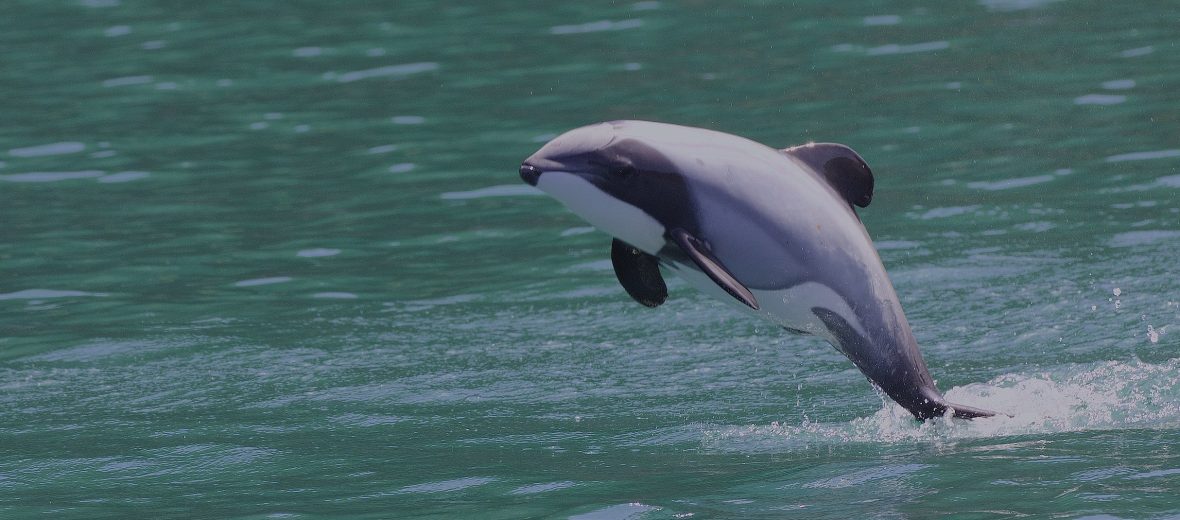
The Hector’s dolphin, aka white-headed dolphin or New Zealand dolphin, can only be found among the coastal waters of New Zealand. They dwell up to 328 feet deep and only about 1/2 mile off shore. Unfortunately, shipping lanes interfere with their livelihood and result in echolocation disturbances as well as ship strike (being hit by oceanic vessels). They also suffer at the hands of pollution, overfishing, and bycatch (getting caught in gill nets and on long lines. The IUCN lists these dolphins as Endangered and their populations are decreasing. The last IUCN survey was conducted back in 2008, and at that time they numbered only 7,381 estimated wild individuals.
First the Stats…
Scientific name: Cephalorhynchus hectori
Weight: Up to 110 lbs.
Length: Up to 5 feet
Lifespan: Up to 20 years
Now on to the Facts!
1.) These dolphins were named after the New Zealand scientist Sir James Hector.
2.) Hector’s dolphins differ from other dolphin species in that they don’t have a beak.
3.) A group of dolphins is called a herd, pod, or school.
4.) They can be seen in small pods of up to 10 individuals.
5.) The Hector’s dolphin is diurnal (active during the day).
But wait, there’s more on the Hector’s dolphin!
6.) Being boisterous and playful, they can be witnessed breaching the water, playing with seaweed, and bow-riding (riding the current just in front of a ship’s bow).
7.) Aggression displays are demonstrated via bubble blowing, splashing water with their tail, biting, and chasing one another.
Did you know…?
Having small, human-sized lungs, these dolphins can only dive for up to 3 minutes at a time.
8.) Red cod, flounder, mackerel, squid, and crabs are all on the menu.
9.) These dolphins are polygynandrous (promiscuous – males and females have multiple partners).
10.) Courtship displays entail close contact, leaping from the water, chasing each other, and belly displays.
But wait, there’s still more on the Hector’s dolphin!
11.) The breeding season takes place during the austral summer.
12.) Females undergo up to a 12 month gestation (pregnancy) that yields a single calf.
Did you know…?
Their vocalizations consist of short, high-frequency clicks. They don’t produce whistles like other dolphins.
13.) The adult females will only reproduce every 2 – 4 years.
14.) Echolocation is only utilized in unfamiliar territory. In known waters, they will not utilize echolocation at all and this sometimes causes run ins with boats, ships, and predators.
15.) In what is called unihemispheric slow wave sleep (USWS), dolphins are able to put 1 side of their brain asleep while the other stays alert.
16.) Sharks are their primary predators.
Now a Short Hector’s Dolphin Video!
Be sure to share & comment below! Also, check out the Critter Science YouTube channel. Videos added regularly!
Want to suggest a critter for me to write about? Let me know here.
Some source material acquired from: Wikipedia & IUCN
Photo credit: Gregory “Slobirdr” Smith



